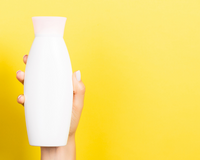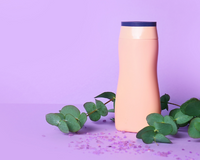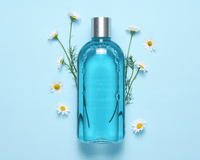Best Moisturizer For Combination Skin
Dry skin and oily skin are the only two types of skin that you can find products for. These days, brands have gone even further and said, "even for sensitive skin types!" But you haven't yet found a single product that says "the best moisturizer for combination skin," have you?
If you think it's hard to find the right moisturizer for your combination skin, you're wrong. You can get the right moisturizer for your skin type by following these steps. As a general rule, people with combination skin have an oily T-zone and dry cheeks. If you have bad skin, it could be because of your genes, hormone changes, or the skincare products you use. It can also change your skin type, but only on certain parts of your face.
How To Choose The Best Moisturizer For Combination Skin?
In how important is it to moisturize a person who has both oily and dry skin? You don't have to do anything else to moisturize, just moisturize your skin. The most important thing you can do for any kind of skin is to wash your face every day. When you moisturize your skin, it makes it look more radiant and healthy.
Dry parts of your face can become very dry if you don't moisturize, and the oily part of your face needs enough water to keep your skin healthy. The following are things to keep in mind when you buy moisturizers for people with mixed skin.
Ingredients for parts of the skin that have combination skin need to be different from those for other parts. Because hyaluronic acid is water-binding, it would help your skin stay moisturized. For example, dry parts of your skin might benefit from that. The parts that get oily might need a light lotion-based moisturizer that won't make them feel too greasy by lunchtime.
What Are The Challenges Of Finding Best Moisturizer For Combination Skin?
So using two different moisturizers for each of the two types of skin is the best way to deal with the mixed skin. You should check how the product feels on your skin. A lot of people don't pay attention to how they act all the time.
A cream-based moisturizer on the parts of your face that get oily will make you feel uncomfortable, greasy, and sticky by the middle of the day. Dry skin will only get worse when you use a lotion-based moisturizer that is very light. It's better to use a thick moisturizer on the parts of your face that are dry. For your T-zone, put on a moisturizer that is light, breezy, and lets your skin breathe.
Look For Barrier Repair Moisturizer
Choose a moisturizer for your skin type if you have both dry and oily parts of your body. If your skin is different, look for a barrier-repair moisturizer that is made for your skin. It can be hard for oily, dry, and combination skin to stay moisturized if it doesn't get enough of it. Trying to figure out what barrier repair is.
When you put lotion on your skin, it is covered by a layer of ceramides that protect it from the outside world and keep it from drying out. It can be removed by changes in the weather, pollution, and the products you use.
When your skin barrier is broken, your skin loses moisture and essential oils, which makes it very dry and itchy. This makes your skin very sensitive. There are times when this can cause your sebaceous glands to produce too much oil in order to keep your skin hydrated.
You can use a barrier-repair moisturizer to help your skin stay hydrated and fight dry or oily skin. Ceramides are lipids that make up your skin's barrier, and they help keep it healthy. They protect your skin from things like pollution and keep it from drying out. However, some things can get rid of this layer of protection, leaving your skin dry and irritated.
Look For Natural Humectants
Combination skin has parts that are both oily and dry. Combination skin may need more than one moisturizer in order to meet its needs fully.
People should look for ingredients that aren't bad for their skin, like non-comedogenic oils and natural moisturizers. To avoid synthetic humectants and occlusives are some of the things you should avoid.
Because the forehead, nose, and chin are all oily in the T-zone (where the oily skin is), this is called combination skin. The cheeks and jawline are all dry. Most of the time, it's more oily in summer and drier in winter.
If you have combination skin, you probably have a lot of different skin issues to deal with and need to be very careful about which products you choose and how you use them. Choosing a moisturizer for your face is even more important.
You can choose a product that's light enough to use on your whole face, but if your skin is dry, the areas that need the most hydration may not get enough. It's possible to use two moisturizers together, each for a different part of your body.
Noncomedogenic Oils
Noncomedogenic oils are those that do not clog pores.
The use of oils on combination skin is not always contraindicated by common perception - provided that the oils are noncomedogenic, which means they do not clog pores.
It is a more stable form of squalene that is a lipid (fat) produced by the body that naturally moisturizes the skin. Squalane is a saturated version of squalene that is more stable. After the age of 30, the body's ability to produce this substance decreases significantly, but it can be restored by using a moisturizer on the skin. Despite the fact that it is technically an oil, it does not have an oily feel, making it suitable for the T-zone.
Plant oils such as marula, jojoba, and argan are light in texture and ideal for combination to oily skin types as well. There is one limitation to using noncomedogenic oils: if your combination skin is already fairly oily, an oil-free moisturizer may be a better choice overall.









